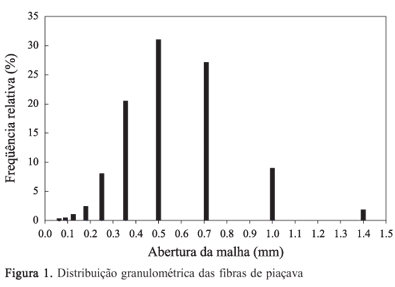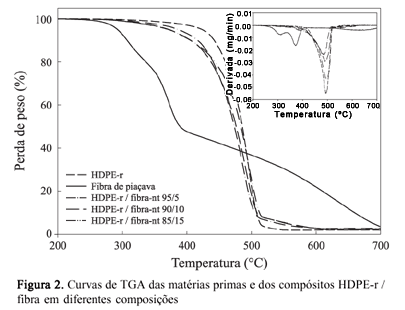The use of natural fibers as reinforcement for thermoplastics, especially for recycled thermoplastics, has generated much interest due to their low cost, possibility of environmental protection and use of locally available renewable resources. In this work we evaluate the thermal, mechanical and morphological properties of composites of recycled high-density polyethylene (HDPE-r) with treated and untreated piassaba fibers (Leopoldinia piassaba) in different proportions (5, 10 and 15% w/w). The objective of this work is to obtain composites of HDPE-r / piassaba fiber in order to fulfill the needs of the consumer market, aiming at preparing low-cost plates for light duty jobs. Fibers were submitted to superficial treatment with silane in two different ways: direct incorporation and treatment with methanolic solution of the coupling agent. The results show that composites of HDPE with silane-treated-only fiber had better mechanical performance than methanolic solutions of silane; the increase on fiber - polymer matrix interface adhesion, as revealed from morphological analysis, can explain this higher performance. Thermal stability of the composites is not greatly affected with the addition of treated fiber.
Polymer composites; piassaba fibers; recycled high density polyethylene







